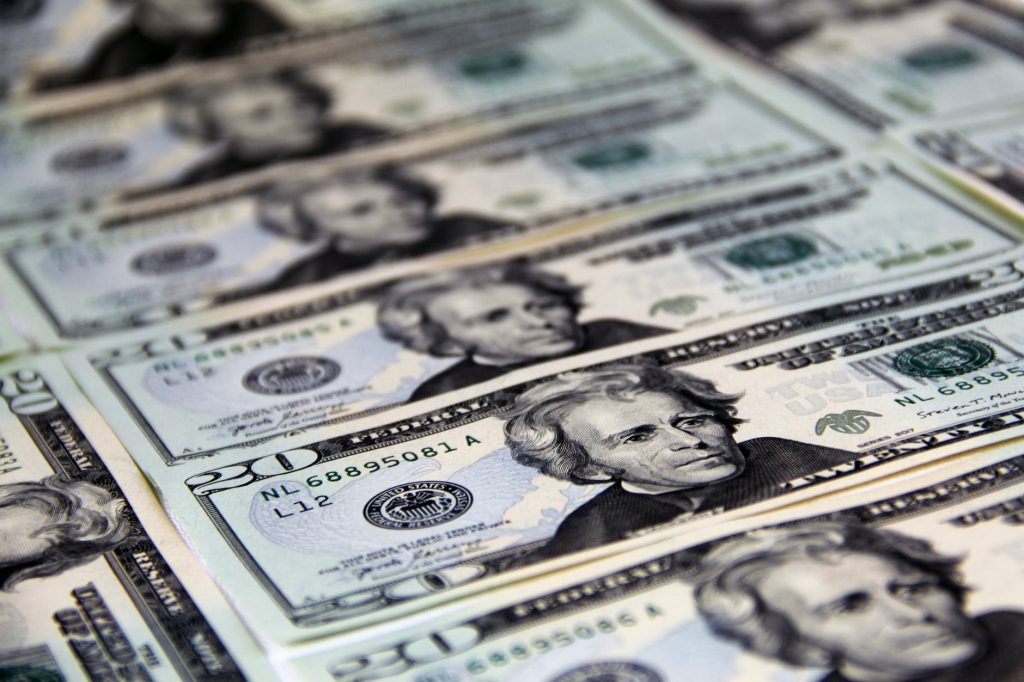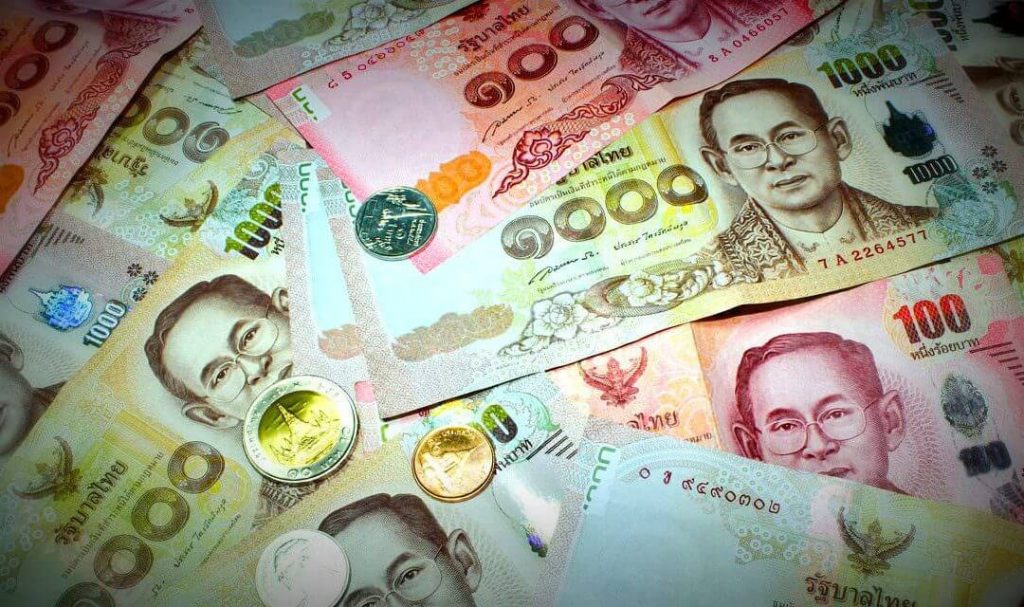The USD/THB currency pair represents the US dollar vs Thai baht. The US dollar is a widely held reserve currency and the Thai baht represents an emerging nation that has recently appreciated against the USD. This page breaks down the USD to THB price history, key influences, trading tips and live charts.
Chart
Why Day Trade USD/THB?
- Volatility – Exotic pairs like the USD/THB tend to see higher volatility than majors or minors. For day traders, this often means more opportunities to generate profits from price action.
- Status – While exotic pairs are typically associated with fragile economies, this isn’t the case with the USD/THB. The US dollar is considered a global reserve currency while the Thai baht has low-yielding bonds and a large account surplus with strong exports and currency reserves.
- USD – For traders already familiar with the geopolitical and economic influences on the US dollar, getting up to speed with this pair could be straightforward.
Trends in Major Currencies and Exotics
Trends in major currencies, such as the USD, tend to outweigh the influence of exotic currencies, such as the THB.
Risks of Trading USD/THB
- Volume – As an exotic pair, the USD/THB sees lower trading volumes compared to majors. The reduced liquidity means wider spreads and pips that can eat into returns.
- Volatility – Exotics are often harder to follow with unpredictable price swings and slippage. This volatility can help profits but can also magnify losses. As a result, the USD/THB is arguably best suited to experienced traders.
- Availability – The USD/THB is not as popular as major forex pairs like EUR/USD. As such, not all forex brokers offer trading in the pair.
- Fees – Bid-ask spreads are generally wider on exotics to compensate for the lack of liquidity and increased risk for brokers. This means traders may need to generate greater returns to realise the same profits seen with other forex pairs.
- Leverage – Brokers tend to offer lower leverage on exotics like the USD/THB. This is to limit risk exposure for traders but also means investors end up with less tradable capital.
USD/THB Day Trading Strategy
Today’s USD/THB trading strategies typically call upon live candlestick charts or fundamental news to inform price forecasts. However, regardless of whether you use historical exchange rate graphs or forward rates, the considerations listed below can help inform price predictions.
Timing
Whilst you can trade on the forex market 24/5, not every one of these hours offers optimal conditions.
Instead, consider trading during periods that offer the greatest volume and volatility, as this will complement most strategies.
Generally, the most volume can be found when the trading sessions of each currency overlap.The US trading session runs from 13:00 to 22:00 GMT while Thailand’s key trading times are 17:30 to 19:30 GMT.Daily volume charts also show significant trading activity takes place when both London and New York trading sessions are open, from 13:00 to 17:00 GMT.
News & FX Rates
USD/THB traders should keep up to date with the news and important economic releases as both can impact market outlook and current sentiment.The quicker you can anticipate the latest export data from Thailand, for example, the earlier you may be to predict the next trend.Established investors often recommend validating fundamental indicators with technical analysis too.
Useful forex news sources include:
- Oanda
- Reuters
- Bloomberg
- TradingView
- Google News
- MarketWatch
- Yahoo Finance
Useful websites for live USD to THB exchange rate conversions include:
- XE
- Visa
- PayPal
- Coinmill
- Super Rich
- Local Thai bank resources include KBANK, SCB, BBL and KTB
Note, some providers also offer detailed charts with monthly and yearly averages.
Risk Management
Mitigating risks should be taken seriously when trading USD/THB.
Aside from stops and limits, it is often recommended to not risk more than 1% to 2% of your total capital on a single trade. This advice is particularly valuable when dealing with risky exotic pairs, as predicting price action can be challenging.
USD Background
Having an understanding of the USD to THB exchange rate history and the factors that influence their respective economies can assist in making informed predictions about future prices.

The US dollar is the most widely used currency in international transactions. The Coinage Act of 1857 established the US dollar as the only legal currency in the US. Prior to this, the Spanish coin and Mexican peso were commonly used for trading around the continent. The Federal Reserve Act was established in 1913, creating the country’s central bank.
USD Influences
- Central bank – Interest rate differentials and quantitative easing measures implemented by the Federal Reserve (Fed) can have an impact on the spot rate and price of the USD. Staying informed about announcements from the Fed can help predict future trends.
- Political stability – Major political events, such as presidential elections, can affect the value of the USD. The extent to which the next administration prioritizes the economy and international trade, for example, will have an impact on the strength of the USD.
- Economic growth – If the US dollar experiences inflation, this will decrease the value of the currency and lead to an increase in the costs of goods and services.
- This signals a weakening in the USD and may present trading opportunities.
- Trade balances – The US imports and exports to a long list of countries and this demand drives the value of the currency. The US has actually been importing more than it exports for several decades. To counteract this, it issues debts to certain countries including China. However, if the debt level is perceived as unsustainable, this can lead to a weakening of the USD.
THB Background
The Thai baht is one of the oldest currencies in circulation, dating back to the 13th century. Since the 20th century, the Thai baht has been pegged to many currencies and metals, including gold, the Japanese yen, the US dollar and the Pound sterling. After the Asian Financial crisis in 1997, The Bank of Thailand (BoT) decided to let the baht float freely.

THB Influences
- Central bank – In the same vein as the US dollar, The Bank of Thailand, which is based in Bangkok, makes important decisions on interest rates. Other actions it takes to help with long-term currency stability or to respond to short-term issues, can all lead to changes in the value of the THB.
- Geopolitics – Exotic currencies, such as the Thai baht are particularly receptive to geopolitical factors.
Reports that signal a fall in exports or employment rates, for example, could see the TBH fall in value against the USD. Equally, political change can bring with it an increase or decrease in the country’s economic strength and currency.
- Trade – The level of trade, along with international reserves, can greatly impact the value of the USD/THB exchange rate. When trade increases, export prices tend to rise faster than import prices, which creates increased demand for the Thai baht. As a result, tracking international trade sentiment can help inform USD/THB trading strategies.
Linked Currencies
Currency pairs don’t move independently from each other. Movement seen in one pair is often reflected in others. Positive correlation is when pairs move in the same direction while negative correlation is when pairs move in the opposite direction.
The USD/THB is positively correlated to the USD/SGD and USD/ZAR, for example. In contrast, the USD/THB is negatively correlated to the SGD/HKD and EUR/HKD. If you’re already familiar with these currencies, you can leverage your existing forex and charting knowledge to make predictions about where the USD/THB may move next.
Final Word On Trading USD/THB
The USD/THB is a popular exotic pair. Offering access to an emerging Asian country alongside the strength and status of the US dollar, it’s an interesting forex pair to start buying and selling. There are plenty of useful resources, from real-time graphs to 5, 10, 20 and 30 years of historical data and charts to help with USD/THB strategies.
There is also a selection of forex brokers to facilitate live and futures trading.
FAQ
How can I convert 1 USD to THB?
The live USD/THB exchange rate changes throughout the day. To see the current price, see the chart above or head to one of many online currency convertors.
What does USD/THB mean?
This forex pair consists of the US dollar, which is the base currency, and the Thai baht, which is the quote currency. The value of USD/THB represents the number of THB equivalent to 1 USD. For example, if the market price of this pair is 32.98, then you would need 32.98 THB to buy 1 USD.
How do I start trading USD/THB?
The first step is opening an account with a forex broker.
